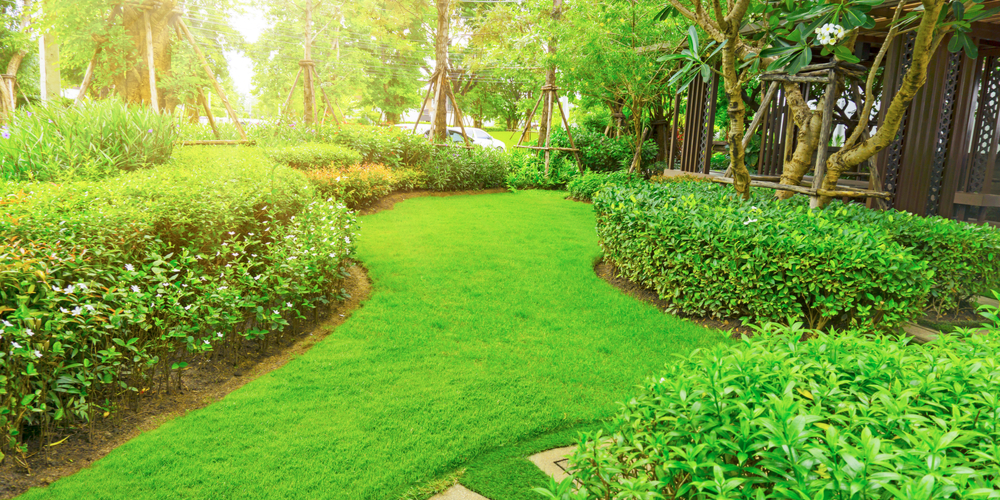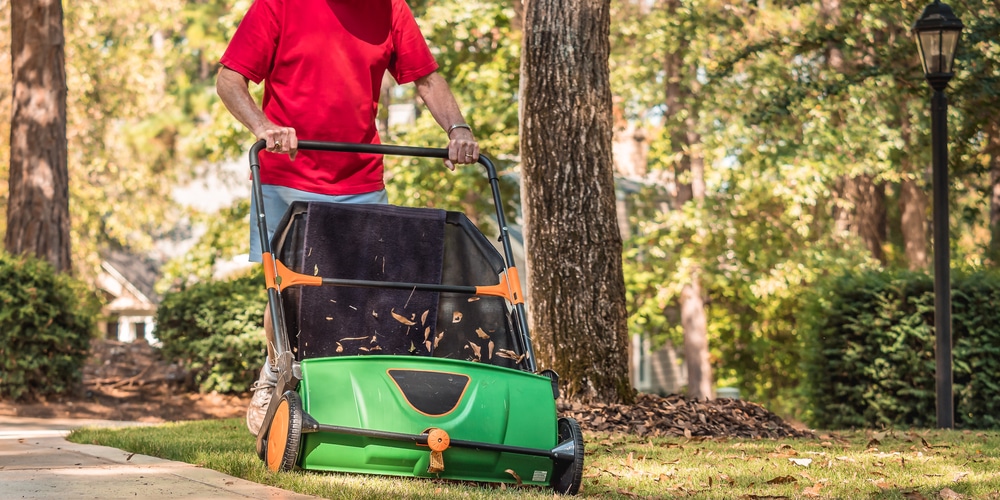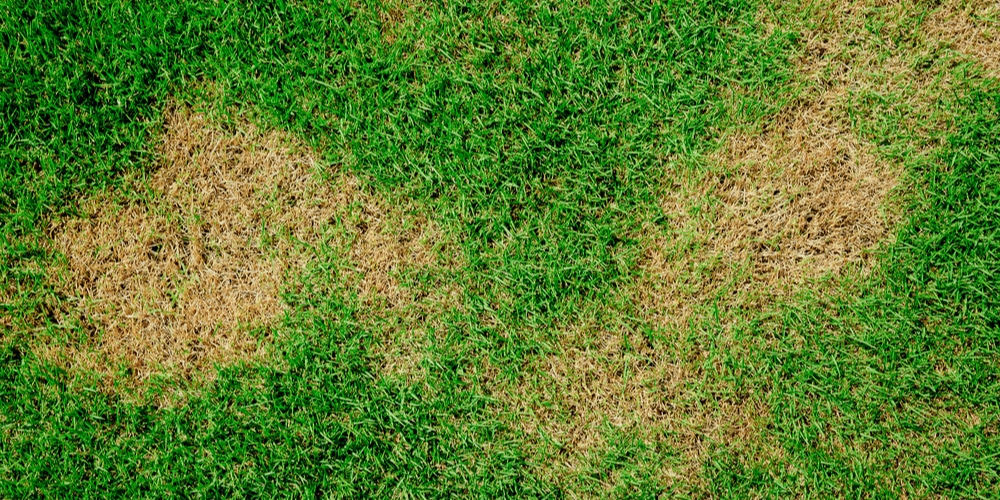Your Lawn is an Ecosystem
Creating a sustainable lawn begins with recognizing the delicate balance of its ecosystem.
Your lawn’s health relies heavily on soil quality and the types of grass you select, which must be suitable for your climate.
Soil Health and Assessment
A robust lawn ecosystem starts beneath the surface with soil health.
An optimal soil environment supports strong root growth and enhances the lawn’s resilience against stress.
Here’s how you can assess and improve your soil:
- Test Soil Regularly: Check the pH and nutrient levels to tailor your soil treatment plan.
- Organic Matter: Incorporate compost to enrich the soil and improve its structure.
- Aeration: Perforate the soil to allow air, water, and nutrients to penetrate the roots.
- Drainage: Ensure your lawn has good drainage to prevent waterlogging, which can suffocate roots.
Grass Types and Climate Adaptation
The types of grass in your lawn can make a significant difference in its sustainability.
Select grass varieties that naturally thrive in your region’s climate:
- Warm-Season Grasses: Ideal for hot climates, these grasses, such as Bermuda and Zoysia, flourish in the heat and are drought-tolerant.
- Cool-Season Grasses: Grasses like Kentucky Bluegrass and Fescue prosper in cooler climates and have higher cold tolerance.
Spring Lawn Care Basics
As the winter recedes, giving way to the freshness of spring, your lawn requires specific care to ensure its health and sustainability throughout the year.
Thatch Management and Aeration
- Thatch Management: The layer of dead grass and roots, known as thatch, can stifle your lawn’s growth by preventing moisture and nutrients from reaching the soil.
Begin your spring lawn care by removing debris and raking out the thatch so that new growth isn’t hindered.
- Rake gently to avoid damaging new shoots.
- Aim for a thatch layer less than half an inch.
- Aeration: Compacted soil impedes root growth, so spring is the opportune time to aerate your lawn.
This process involves creating small holes to allow air, water, and nutrients to penetrate the roots.
- Use a core aerator for the best results.
- Aerate when the lawn is moist but not wet.
Watering and Irrigation Practices
- Watering Wisely: Overwatering can be as harmful as underwatering.
Provide your lawn with an inch of water per week, which is the optimal amount for most grass types to thrive.
- Water early in the morning to reduce evaporation.
- Infrequent, deep watering encourages strong root systems.
- Irrigation Systems: If you use an irrigation system, spring maintenance is crucial to avoid wastage and ensure efficient operation.
- Check and clean sprinkler heads.
- Adjust the watering schedule according to weather patterns and lawn needs.
Organic Lawn Maintenance
Adopting organic lawn care practices not only supports your lawn’s health but also aligns with environmentally friendly concepts that benefit the wider ecosystem.
Let’s explore how you can control weeds naturally and utilize organic fertilizers for the optimal growth of your turf.
Natural Weed Control
- Manual Removal: The most straightforward approach is to get your gloves on and pull out weeds.
- This method helps eliminate weeds before they spread, ensuring your lawn remains healthy and attractive.
- Dense Planting: Plant your grass densely to minimize the space available for weeds to grow.
- A fuller lawn naturally suppresses weed development by outcompeting them for sunlight and nutrients.
- Boiling Water: Pouring boiling water directly onto the weeds is an effective way to kill them without the use of chemicals.
- Be sure to aim carefully so that only the weeds are affected.
Using Organic Fertilizers
- Compost:
- Add compost to your lawn to enrich the soil with necessary nutrients. It encourages worm activity which is crucial for soil health.
- Periodically apply a top dressing of compost to gradually build up soil quality over time.
- Organic Lawn Feeds:
- Opt for organic lawn feeds that are specifically designed to release nutrients slowly, improving your lawn’s resilience and health.
- These fertilizers are derived from natural materials, including bone meal or fish emulsion, which provide a balanced diet for your lawn.
Lawn Renovation and Overseeding
Spring presents an excellent opportunity to rejuvenate your lawn through overseeding, which can fill in bare patches, improve lawn density, and enhance your lawn’s overall appearance.
Here is an optimized approach to lawn renovation and overseeding:
- Prepare Your Lawn
- Mow your grass to a low setting, about 1 inch shorter than usual, which allows more sunlight to reach the soil and aids seed germination.
- Rake the lawn to remove debris and dead grass, and to create a better seed-to-soil contact. This step is essential for the seeds to receive adequate moisture and nutrients.
- Choose the Right Seed
- Select a seed mix that matches your existing lawn and the climatic conditions of your area. Cool-season grasses generally require soil temperatures between 50 to 65 degrees Fahrenheit.
- Overseed
- Use a spreader to evenly disperse the seeds over your lawn. For better results, a slit-seeder is recommended as it places the seed directly into the soil.
- Water and Maintain
- Water your lawn lightly but frequently to keep the soil consistently moist until the seeds germinate.
- Avoid foot traffic on the overseeded areas to prevent disruption of seed growth.
Environmental Stewardship
Embrace your role as an environmental steward with targeted strategies for a sustainable spring lawn.
This involves promoting biodiversity through native planting and managing pests with beneficial insects, all without chemical reliance.
Biodiversity and Native Planting
- Opt for Native Species: Select plants that are indigenous to your area.
- They require less water, are more resistant to local pests and diseases, and provide essential habitat for native wildlife.
- Support Pollinators: By planting flowering natives, you offer vital resources for bees, butterflies, and other pollinators.
- This helps maintain the ecological balance and encourages a diverse set of plant and animal life.
Pest Management with Beneficial Insects
- Attract Natural Predators: Encourage ladybugs, lacewings, and other beneficial insects by planting species like yarrow or dill.
- These insects will naturally control harmful pest populations.
- Create Habitats: Implement insect hotels or leave some areas of your yard a bit wilder to provide shelter for these helpful creatures, bolstering their presence in your garden.
Frequently Asked Questions
In this section, you’ll find clear answers to some of the most common queries related to establishing and maintaining a sustainable lawn through spring gardening practices.
How can a beginner get started with sustainable gardening?
Starting with sustainable gardening is simple:
- Research and implement basic sustainability principles, such as water conservation.
- Also, research and implement organic gardening.
- Assess your garden space and decide what you want to grow based on your local climate and soil conditions.
What are essential sustainable gardening techniques?
Several key techniques should be part of your sustainable gardening practice:
- Utilize rainwater harvesting systems to conserve water.
- Also, engage in mulching to preserve soil moisture and suppress weeds.
- Finally, opt for organic or natural fertilizers over synthetic ones.
What makes a gardening practice sustainable?
A gardening practice is considered sustainable when it:
- Reduces environmental impact and promotes biodiversity.
- Conserves resources, such as water and energy, and utilizes them efficiently.
- Also, it avoids the use of harmful chemicals, thus preserving soil health and local wildlife.
How can I create a sustainable vegetable garden?
To create a sustainable vegetable garden:
- Start with healthy soil by incorporating organic matter and compost.
- Then, choose local plant varieties that are better adapted to your area.
- Make sure these varieties are also more resistant to local pests and diseases.
- Finally, practice crop rotation to maintain soil nutrients and prevent pest buildup.
Which eco-friendly products are recommended for garden sustainability?
For garden sustainability, consider these eco-friendly products:
- Natural or organic potting soil free from synthetic chemicals.
- Compost bins for converting kitchen and garden waste into nutrient-rich soil amendments.
- Finally, water-saving irrigation systems, such as drip lines or soaker hoses.
What are innovative sustainable gardening ideas for educational settings?
In educational settings, innovative sustainable gardening ideas include:
- Creating a school vegetable garden where students can learn about sustainable agriculture firsthand.
- Setting up a rainwater collection system to teach students about water conservation.
- Introducing a composting program that demonstrates the cycle of organic matter and supports the school garden.



